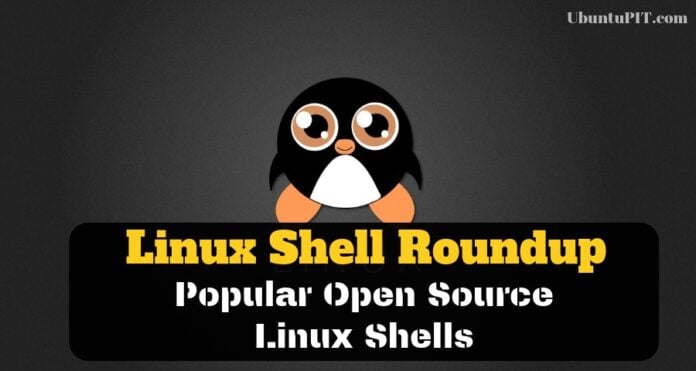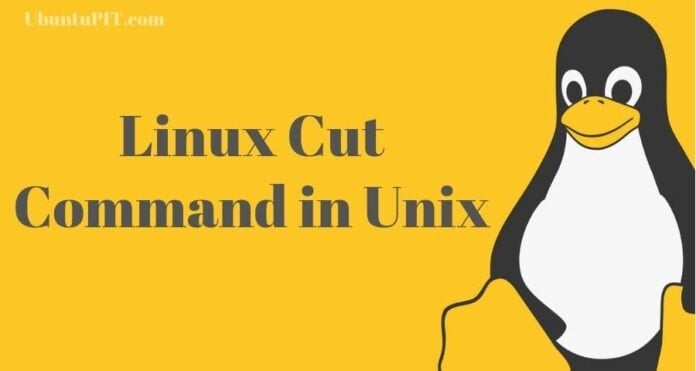Unix systems have captivated the world since its inception in the 70s. One of the fundamental features that helped Linux and BSD distributions in securing their current stature is the Linux shell. The shell is one of the essential tools for many Linux aficionados due to its immense power and diverse applications. It is a command-line interface to your operating system, which allows you to perform any kind of operation depending on your criteria. Moreover, Linux shells are not just an interface but also a full-fledged scripting language with its own set of syntax and semantics.
Frequently Used Linux Shells
Linux offers some of the best open source shells for power users who are always looking for adding new toolkits to their arsenal. Which, in turn, makes choosing a particular shell quite hard for many everyday users. Our editors have taken the liberty to point out some of the best and free open source shells for Linux users. Stay with us to find out which Linux shell serves your purpose the best.
1. sh Shell
The Bourne Shell or “sh” was the original shell in the historic Unix operating system. Its creator, Stephen Bourne, developed it in the AT&T Bell Labs in 1977 and since then it has been shipped with most earlier Unix systems. The Bourne Shell gained its short-form from the scripting extension it uses, which, unsurprisingly, requires users to end script names with sh. It set the bar for many popular future shells with features like redirection, scripting abilities, and robust language constructs.
Features of the Bourne Shell
- The default shell prompt of the Bourne Shell is the $ symbol, and it was the first shell that used this character for its prompt.
- It has in-built support for input-output redirection, Unicode, stream redirection, batch scripting, and many more.
- Although the original 1977 version of this shell was proprietary, it has been made publicly available with access to the source.
- The sh shell is highly configurable and can be modified to match different system criteria easily.
2. Bash Shell
Known widely as the Bourne Again Shell, Bash is probably the most used Linux shell in contemporary Unix machines. If you are on a standard Linux distribution such as Ubuntu or Arch, then the default shell you’re using is the Bash shell. This open source Linux shell is well-known in the community for its robust feature set and usability. Most Linux users thus run Bash at one point or another in their life.

Features of the Bash Shell
- The command-line editing features provided by Bash is simply outstanding, and it offers unlimited command history.
- Bash provides robust shell functions, aliases, job control mechanisms, input-output redirection, ISO 8061 support alongside Unicode support.
- This open source Linux shell provides auto-completion support for command names, paths, wildcards and allows colored directory listings alongside text highlighting.
- Bash can perform integer arithmetic of any base from two to sixty-four and allows indexed arrays with unlimited size.
3. C Shell
The C shell or “csh” is one of the oldest open source Unix shells. It was developed in the 70s by Bill Joy, a then-graduate student at the UCB. Since then csh has been shipped with numerous Unix variations, most notably the various BSDs. It incorporates a C-like syntax for the interpreter which is helpful to many due to the fact that the original Unix system and modern Linux kernels are largely written in C/C++.
Features of the C Shell
- C shell offers an innovative history mechanism, job control procedures, interactive file name, and user name completion alongside standard C-like syntaxes.
- It allows advanced users to utilize it either as an interactive login shell or a command processor for shell scripts.
- The default shell prompt used by the Linux C shell is the ‘%’ symbol, contrary to the familiar ‘$’ sign to many Bash users.
- C shell allows users the ability to search and replace on variable substitutions alongside matching patterns based on wildcards.
4. Korn Shell
The Korn Shell or ksh is arguably one of the most popular open source shells for Linux today. It was developed in the legendary Bell Labs by David Korn who took inspirations from the interactivity of the C shell and productivity of the Bash shell. The Korn Shell has gained immense popularity since its early days, thanks to its ahead-of-time features which include advance job control, command aliasing, floating-point arithmetic alongside many others.
Features of the Korn Shell
- Korn Shell allows users to terminate current jobs using Ctrl + Z and put them either in the foreground or background using the commands fg and bg.
- It can be used for storing the shell code directly in memory which allows increasing programming ability and efficient performances.
- The ksh offers advanced command-line editing where users can use vi or Emacs-style editing commands directly from their shell.
- Korn Shell scripts are usually faster than Bourne shell scripts and offer advanced I/O features alongside notable security mechanisms.
5. Zsh Shell
The ZSH Shell is an innovative, modern-day Linux shell with a plethora of robust features. It is developed on top of Bash and offers an interactive login shell alongside the effective command interpreter. Zsh is known for its performance, which improves upon many open source shells for Linux by some long distance. It also borrows elements from other popular shells of the 90s, including the Ksh and Tcsh shells. Try Zsh if you’re Linux guru looking for advanced Linux shells.

Features of the Zsh Shell
- The auto-completion functionality of Zsh is very intelligent and supports heavily interactive auto-completion for both files and paths.
- The history sharing mechanism of this open source Unix shell is simply immense, allowing the shared history of many different terminal instances running at the same time.
- Users can choose from over 400 plugins and 200 plus themes from its popular, community-driven framework oh-my-zsh.
- Zsh also has support for vi-mode, smart escaping, recursive globbing, piping outputs to temporary files, spelling correction, and many more interactive features.
6. Tcsh Shell
The Tcsh shell is an upgraded version of the C shell that offers programmable command completion and command-line editing as its key features. It is completely compatible with the Csh shell and can be used both as an interactive login shell and a shell script processor. Tcsh comes with a powerful command-line editor, a modern history mechanism, programmable word completion, job control, spelling check support, and a C-like syntax followed by Csh. This Unix shell is most suitable for advanced programmers.

Features of the Tcsh Shell
- Tcsh comes with built-in support for auto-completion of files and variables as well as programmable completion and alias argument selectors.
- It allows seasoned users to incorporate wildcards for greater flexibility when running shell scripts at the terminal.
- The pre-built where command of this Linux shell works like the which command in Bash but displays every location of the target specified in the $PATH directory.
- Tcsh is the default command-line interpreter for FreeBSD and its descendants such as DragonFly BSD and DesktopBSD.
7. Fish Shell
The Fish Shell is a friendly, interactive Unix shell which aims to be a modern-day replacement of the early open source shells for Linux. It is available on every Linux and BSD distributions alongside the Windows operating system. Fish offers a rich set of powerful features which makes it easier to discover, remember, and use exciting Linux commands on your machine. If you’re looking for a smart command-line shell for your Linux desktop, Fish is certainly worth a try.
Features of the Fish Shell
- Fish offers a powerful automatic suggestion feature known as ‘search as you type’ based on your command line history and current directory.
- Its feature-rich Tav completion feature allows users to expand file paths, variables, and many command specific completions with wildcards and brace expansion.
- Fish comes with in-built support for 24-bit true color, making your terminal sessions much more colorful and appealing.
- It is an excellent shell for people looking for open source shells that work out of the box and requires no configuration.
8. Ion Shell
The Ion shell is an enthralling modern-day shell that features a simple yet powerful syntax alongside a significant increase in performance. It is written using the Rust programming language, which makes it way less vulnerable to common ‘ShellShcok’ problems encountered by many Bash users. Ion borrows many design elements from popular shells such as Bash, Fish, and Oil. So it shouldn’t take you much time to get up and running with this fantastic shell.
Features of the Ion Shell
- Ion shell is faster than Dash, which itself is roughly four times faster than the standard Bash shell most Linux machines use today.
- Due to being written in Rust, Ion offers a high degree of memory safety than traditional C/C++ based Unix command-line shells.
- Ion has in-built expansion support for strings, arrays, globs, braces (ranges, permutations, nested braces), arithmetics, and processes.
- Its simple, clean, and concise design makes it relatively easy to get used to and allows users to compile the shell as a static binary.
9. Dash Shell
The Dash shell is an acronym for Debian Almquist shell (dash) and is the default command-line interpreter for Debian operating systems. It is much smaller than the standard GNU Bash shell but still aims at POSIX-compliancy. Dash has descended from the NetBSD version of ash (the Almquist SHell) before being ported to the Linux ecosystem and offers a significant performance boost than traditional Unix shells. Dash is faster than most shells and requires less space and fewer libraries.
Features of the Dash Shell
- Dash is one of the fastest open source shells for Linux, clocking almost four times faster than Bash and other standard shells.
- The minimalistic design of Dash makes it much smaller than everyday command-line interpreters and requires limited system resources (disk space, RAM or CPU).
- Due to its significantly smaller codebase, Dash has a lesser attack surface and is very secure from frequent shell attacks.
- Ubuntu or Debian system users can find more information on Dash by typing man dash in their terminal window.
10. Eshell
Eshell is a convenient command-line interpreter program written using Emacs Lisp and aims at being extremely portable alongside providing seamless support for Lisp codes. It offers quite a substantial list of everyday features including auto-completion, history management, job control mechanism, and many more. The scripting constructs shipped with Eshell are pretty straightforward and does the job properly. If you’re a Lisp programmer or an avant-garde Emacs enthusiast, Eshell can become the perfect Linux shell for you.

Features of the Eshell
- Eshell isn’t a standalone terminal emulator, rather an everyday shell that communicates with your machine using Emacs’ functionalities.
- As of now, it doesn’t support interactive programs directly, so you need to invoke them in a separate ANSI-term instance.
- Eshell’s default support for history modification and interaction is pretty good, and the syntax is somewhat similar to Bash and Zsh.
- Users can customize Eshell by modifying the eshell-prompt-function variable, which defines how the prompt should behave in your system.
11. rc Shell
The rc shell is a classic command-line interpreter that has a close resemblance with the Bourne shell. However, it has somewhat of a simpleton structure compared to the Bourne shell. This is because rc uses a C like control structures rather than the ALGOL-like syntax used by sh. Tom Duff, the primary developer of this Unix shell, is well-known for his quality programming and exceptional problem-solving abilities.
Features of the rc Shell
- rc uses the if not scripting constructs instead of vanilla else and provides the same for loop you use in the Bourne shell.
- Although rc has a weak typing discipline, it incorporates a powerful mechanism to manipulate variables.
- rc is reasonably lightweight, thus making it faster than many traditional open source shells for Linux.
- It comes equipped with excellent support for exception handling, search and replace mechanism, pattern matching, and many more.
12. Scsh Shell
The Scheme Shell or Scsh is a portable command-line shell available for a wide variety of operating systems besides Linux and BSD. It is layered with the Scheme programming interface and is designed to write real-world Unix programs at ease. It can be used to write efficient scripts for applications and standard operating system programs. It comes with in-built support for pipelines, input-output redirection, symbolic links, BSD sockets, regular expression pattern alongside many more exciting features.
Features of the Scsh Shell
- The Scheme shell has excellent library support for everyday scripting constructs such as lists, characters, and strings.
- Users can choose from using Scheme regular expressions, a domain-specific language (DSL), or little languages when manipulating regular expressions.
- The networking support provided by this open source shell is really top-notch and faster compared to many.
- Its quality abstractions support pseudo terminals, awk like scripts, macros, smart search, and replace abilities among many more.
13. Xonsh Shell
Xonsh is a modern-day Linux shell powered by the Python scripting language. If you ever wondered whether you could use the Python interpreter as your Unix shell, Xonsh allows you to do exactly this. The language has been built as a superset of the Python 3.5+ and provides numerous shell primitives that you regularly use in Bash and iPython. Moreover, their website is really great and allows new users to try out Xonsh live from their browser.
Features of the Xonsh Shell
- Xonsh was developed as a sane language with native support for a range of operating systems including Linux, Mac OSX, and Windows.
- The tab-completion feature of this shell is simply outstanding and also supports completions from man-page parsing.
- Users familiar with Python will find Xonsh very suitable as the syntax resembles that of Python’s very closely.
- It comes with quite a vast library that offers many everyday primitives right out of the box.
14. Oh Shell
Oh is a fantastic open source shell for modern Linux users. Although at first glance it will seem quite similar to traditional Unix shells, it diverges from them when it comes to programming. Being developed using Golang, Oh offers high-quality native concurrency support. However, the core of Oh is an extremely modified instance of the Scheme programming language. It also uses the same syntax for code, data, pipe, and channels – allowing the end-user to use them interchangeably in their scripts.
Features of the Oh Shell
- The shell itself is built using Go, but the programming constructs are a dialect of the Scheme programming language.
- Oh is one of the best Unix shells when it comes to supporting concurrency.
- It handles channels alongside pipes as first-class values and has a concise syntactical structure.
- Oh allows both public and private members and uses them as the basis of a prototype-based object system.
15. Elvish shell
The Elvish shell is one of my most favorite open source shells for Linux since I tried it some months ago. It is a genuinely fantastic command-line interpreter that allows you to do all sort of things on your machine. From manipulating the system itself to writing eloquent scripts, Elvish can be used for accomplishing an extensive list of tasks. It comes with a rich library of robust functions for string manipulation, regex matching, JSON parsing, networking, and many more.

Features of the Elvish Shell
- Elvish pipelines allow the system to stream structured data such as lists, maps, and even functions alongside standard text data.
- It comes with a familiar C-like syntax which makes scripting in Elvish very intuitive for seasoned Linux users.
- Elvish is written using the Go programming language and thus is very type-safe compared to other Unix shells.
- This Unix shell comes with a pre-built file manager that makes system management much more comfortable.
Ending Thoughts
Due to a plethora of robust open source shells offered by Linux’s growing ecosystem, it often becomes a hard task to choose the right Linux shell for you. Our editors have thus gone over all the popular choices you can find and compiled this handy guide for you. As people have a varied preference for different sorts of shells, the best one for you depends entirely on you. We encourage our readers to try on some of these shells based on their requirement and gain first-hand experience for themselves. Leave us a comment on your thoughts about our picks.



BASH is not a Linux shell else GNU shell please don’t confuse people.
What about Nu
Great guide on different shells. I’m an experienced *Nix users and have used many shells over the year. Started elvish after reading this guide and came back just to say how great you are dude. Keep it up, the community needs ya!
Very informative and detailed explanation about the shell type in Ubuntu.